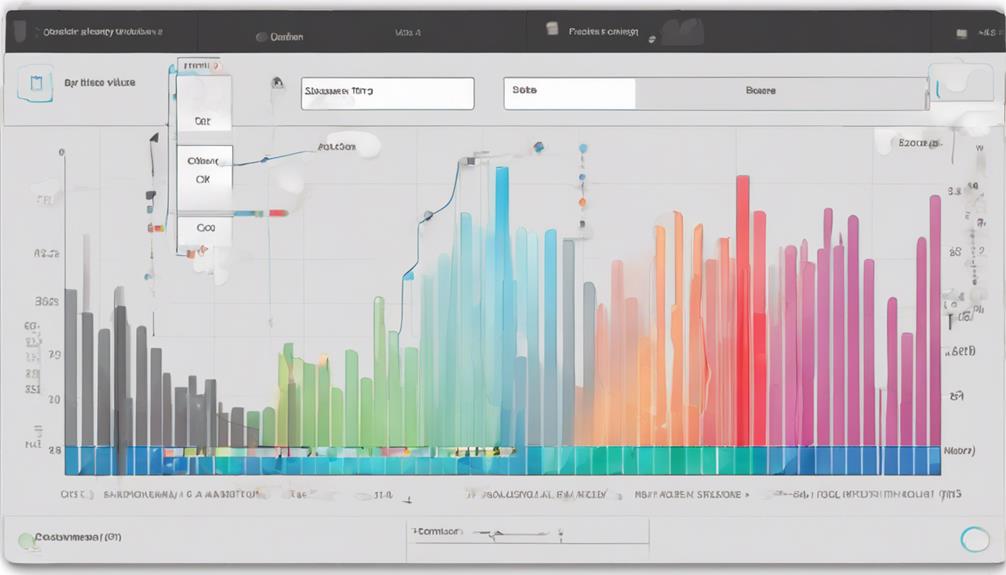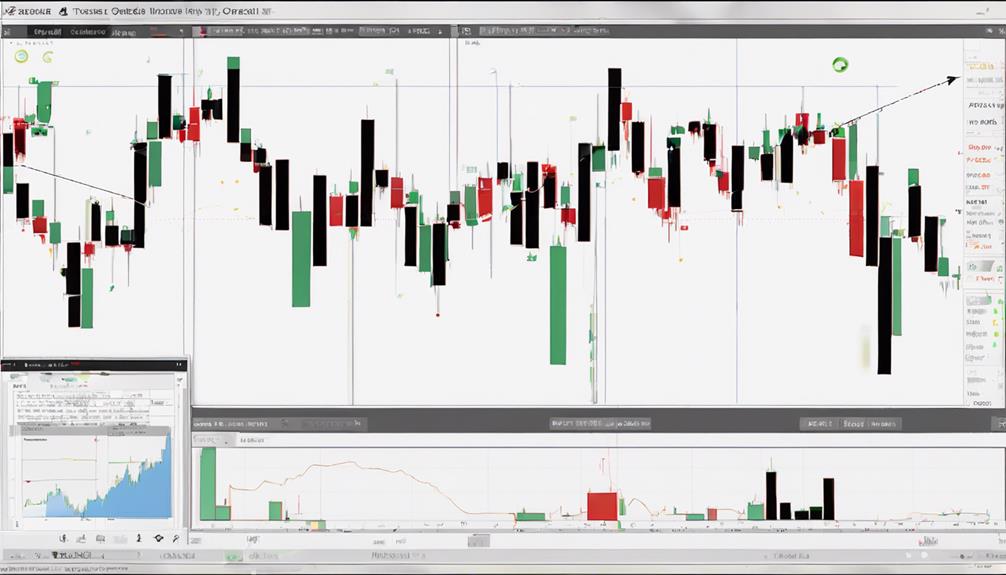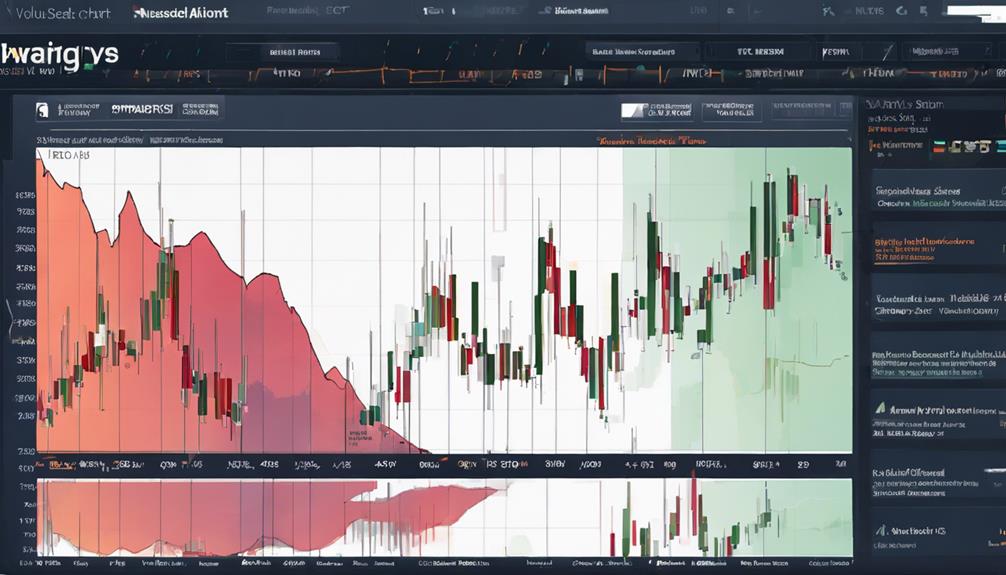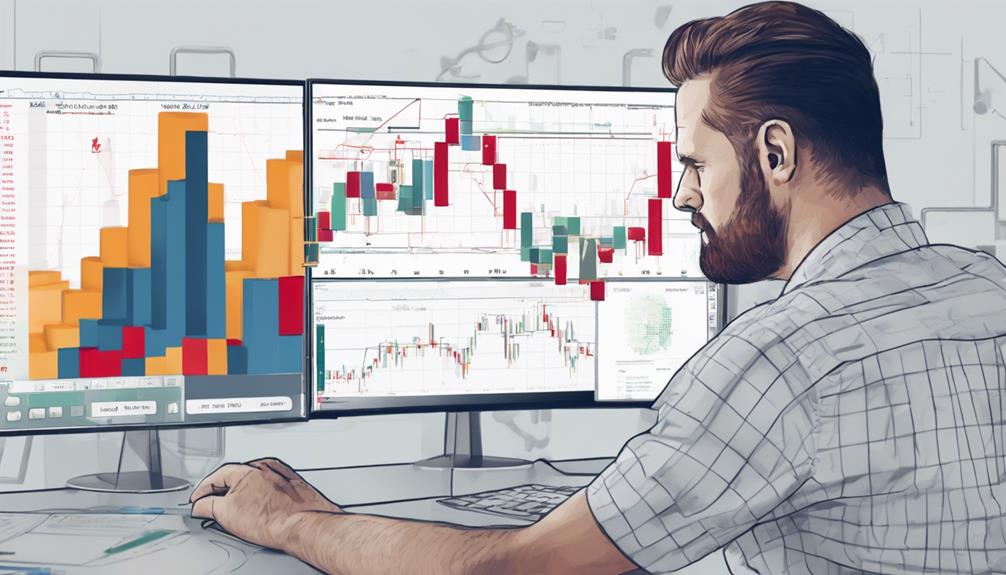You may not be aware that volume-based indicators can provide crucial insights into market trends and potential price movements.
Have you ever wondered how traders use volume data to make informed decisions and gain a competitive edge in the market?
Understanding the intricacies of volume-based indicators can significantly impact your trading success. By exploring the various aspects of volume analysis and its practical applications, you can uncover valuable strategies to enhance your trading performance.
Overview of Volume-Based Indicators
Volume-based indicators play a crucial role in analyzing market dynamics by assessing buying and selling pressures through volume data. These indicators, such as On Balance Volume (OBV) and Chaikin Money Flow (CMF), are essential tools for traders to understand stock price movements.
By utilizing volume data, traders can gain valuable insights into market trends and potential reversals. Money Flow Index (MFI) and Accumulation/Distribution are also widely used volume-based indicators that help assess the strength and direction of price movements.
Additionally, Volume Weighted Average Price (VWAP) is considered one of the best volume indicators as it factors in both price and volume, providing a more accurate average trading price. Incorporating these technical indicators in your trading strategy can help you make more informed decisions and improve trading outcomes.
Calculation Methods for Volume Indicators

When calculating volume indicators, it's essential to consider the specific methodology employed by each indicator to accurately gauge buying and selling pressures in the market. Different volume indicators utilize distinct calculations to interpret price and volume data effectively.
Some common calculation methods include:
- On Balance Volume (OBV) tracks the cumulative volume flow by adding volume on up days and subtracting it on down days.
- Money Flow Index (MFI) integrates price and volume data to assess market strength and potential reversals.
- Chaikin Money Flow (CMF) analyzes institutional accumulation or distribution of a security through volume data.
Understanding these calculation methods is crucial for traders seeking to interpret volume signals and make informed decisions based on market dynamics.
Interpreting Volume Signals in Trading

To effectively navigate the complexities of trading, understanding how to interpret volume signals is paramount for making well-informed decisions based on market dynamics. Trading volumes reflect market interest and liquidity, with high volumes supporting price movements and low volumes indicating limited activity. Analyzing volume signals provides insights into buying and selling pressure, market sentiment, and potential trend reversals.
Advantages of Using Volume-Based Indicators

Exploring the advantages of incorporating volume-based indicators into your trading strategies reveals valuable insights into market dynamics and enhances decision-making processes.
These indicators provide a deeper understanding of market interest, trend strength, and potential reversals. Additionally, they help in identifying breakout opportunities that may not be as apparent through price analysis alone.
Overcoming Limitations in Volume Indicator Analysis

To enhance the effectiveness of volume indicator analysis and navigate around its limitations, consider employing strategies that account for variations in market conditions and potential false signals that may arise.
During low liquidity periods, volume indicators may produce misleading signals. Utilizing multiple volume indicators can help confirm signals and overcome individual limitations.
Market analysis should also consider how news events can distort volume readings, impacting the accuracy of technical indicators. Adjustments may be necessary for different trading instruments due to varying liquidity levels.
Combining volume analysis with other technical tools can mitigate the impact of volume indicator limitations, enhancing the overall quality of market analysis.
Can Volume-Based Indicators Enhance Trades?
When it comes to exploring volume trading indicators, many traders believe that they can enhance their trades. By analyzing the volume of a stock or asset, these indicators can provide valuable insight into market strength and potential price movements. Incorporating volume-based indicators into trading strategies can help traders make more informed decisions.
Frequently Asked Questions
How Do You Trade With Volume Indicator?
You trade with volume indicators by analyzing buying and selling pressure. Confirm trend strength, pinpoint reversals, and detect divergence patterns for smarter decisions. Use signals like CMF crossing zero line to gauge market sentiment shifts. Improve risk management and trade outcomes.
Which Is the Best Indicator for Volume in Trading View?
When trading in Trading View, the Chaikin Money Flow (CMF) indicator is often regarded as the best for volume analysis. It helps you pinpoint trends, confirm breakouts, and identify potential reversals, making informed decisions easier.
What Is the Most Useful Volume Indicator?
The most useful volume indicator for trading depends on your style and preferences. Common ones include OBV, CMF, and Volume Price Trend Indicator. Traders rely on these to gauge market interest, trend strength, and liquidity.
How Do You Use a Volume Profile Indicator in Trading?
To use a volume profile indicator in trading, identify key price levels where trading activity is concentrated. Look for areas of high volume to pinpoint potential support or resistance zones. Make informed decisions on entry and exit points based on volume clusters.
Conclusion
In conclusion, incorporating volume-based indicators into your trading strategy can revolutionize your approach to the market. By analyzing volume signals, you can unlock a treasure trove of insights that will guide your decision-making process with precision.
Imagine the power of seeing through market trends like a seasoned detective with a magnifying glass – that's the potential impact of leveraging volume indicators in your trades. Don't underestimate the game-changing benefits they can bring to your trading arsenal.
